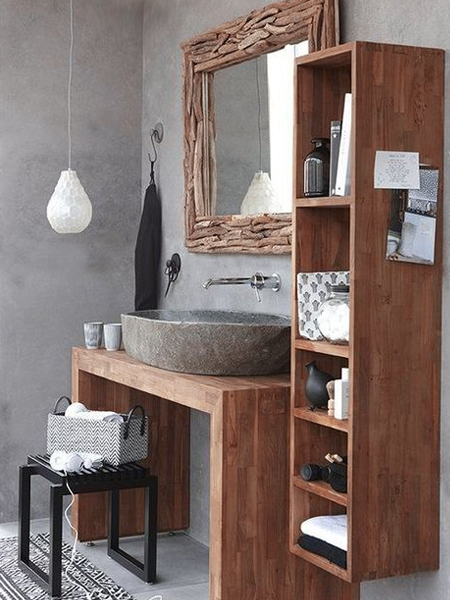Design a Bathroom Using Concrete
Some of the pros and cons if you are thinking about designing a bathroom using concrete rather than traditional materials.
18/05/2022
Using concrete as part of bathroom design has continued to grow in popularity as homeowners discover the practicality and low-maintenance of this type of finish in a bathroom, wet room, or shower. Rather than have to decide on paint colour and type, tiles on floor or walls, or other decorative finish for a bathroom, choosing cement and concrete provides a waterproof room that will be free from leaks and easy to keep clean. This is one finish that won't quickly go out of style and, when property installer, should last a lifetime. This makes concrete a cost-effective material for finishing and decorative a bathroom.
Having said that, a concrete bathroom is not for everyone. A staple in modern or contemporary homes, you wouldn't find a concrete bathroom in a country cottage or traditional house. Concrete design for bathrooms is a cutting edge style that has evolved over the years from boring grey concrete to earth-hued coatings that can be etched, stained, or stamped with patterns.
Concrete is Do It Yourself
What makes concrete a great solution for bathrooms is the ability to do it yourself. Concrete floors, cement finishes on walls, and precast concrete bathtubs, vanities, and shelf units, being able to install all these in your bathroom will save you a huge amount on a bathroom renovation. Definitely something to think about! But for those who prefer not to go the DIY route, never worry, there are plenty of companies out there that will handle everything for you.
Pros and Cons of a Concrete Bathroom
The Pros:
Using concrete for a bathroom is an economical alternative to other methods.
Concrete is a low-maintenance material and a quick wipe once a week will be all it needs to stay clean.
A concrete finish can be sealed or polished on a regular basis to ensure it stays good looking.
Concrete finishes are long-lasting.
Concrete is impervious to moisture if properly installed and sealed.
Concrete flooring allows for the addition of underfloor heating.
The Cons:
Concrete can be seen as a cold and industrial material, but there are ways to warm up the room with organic materials and textiles.
A concrete floor, when compared to wood, doesn't offer a soft landing in the event of an accident.
While concrete is a hard material, soften concrete flooring with mats or rugs.
Concrete Doesn't Have to be Cold
The main con against concrete is the fact that it can appear cold and sterile, but this does not have to be the case if you incorporate plenty of organic materials and textiles. Think thick natural mats or rugs, wood accessories and fittings.
Many people see concrete as cold and sterile, but by incorporating organic materials such as wood, you can bring warmth into the bathroom and still have a maintenance-free space.
Design a Unique Soaking Bathtub
For the perfect spa bathroom, you are going to need a bathtub that is large enough for a good soak - on your own or as a couple. Since this is nothing something you can buy ready-made unless you are prepared to fork out some serious cash, there is always the option of casting your own concrete bathtub. Watch the video below to find out how easy it is to cast a concrete bathtub that is large enough for two and also a statement piece in any bathroom. And instead of using a cheap form for the casting, they use a large block of polystyrene...clever!






